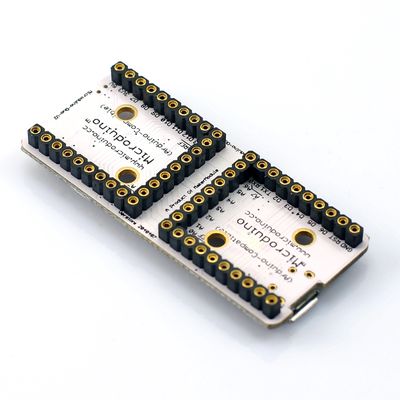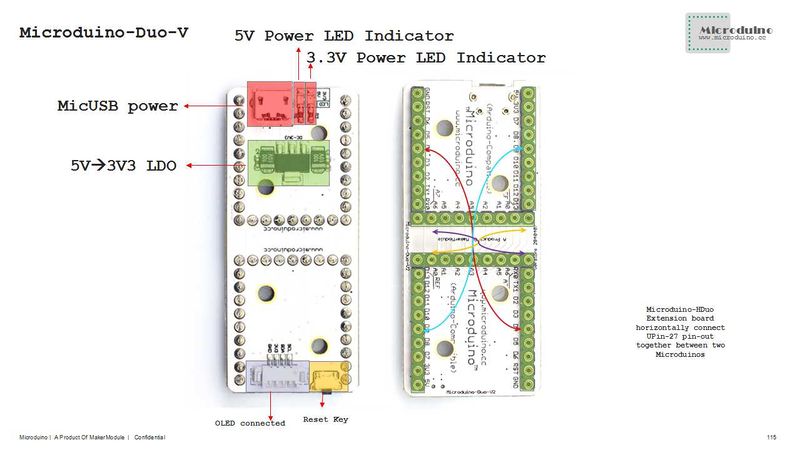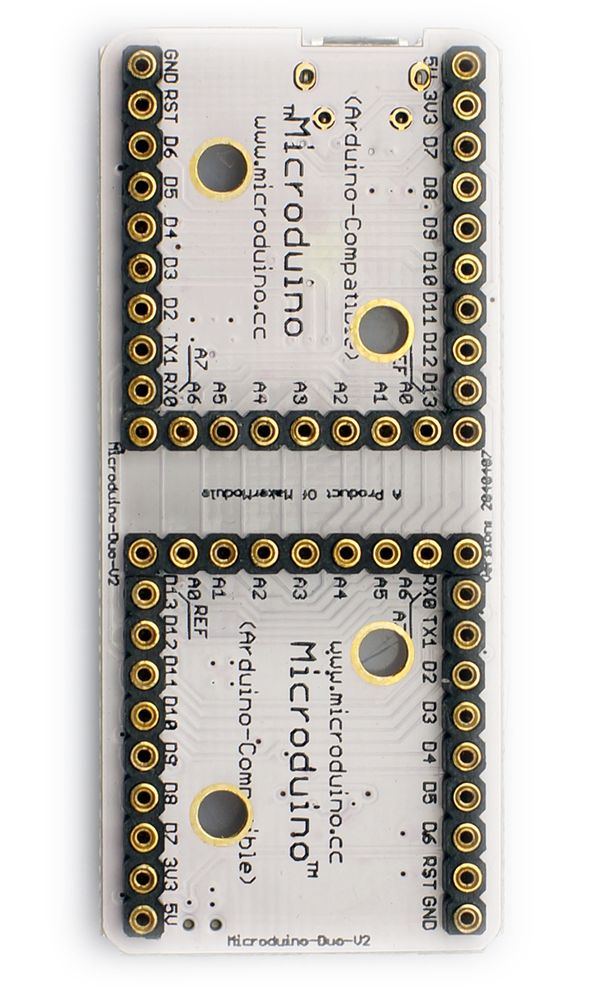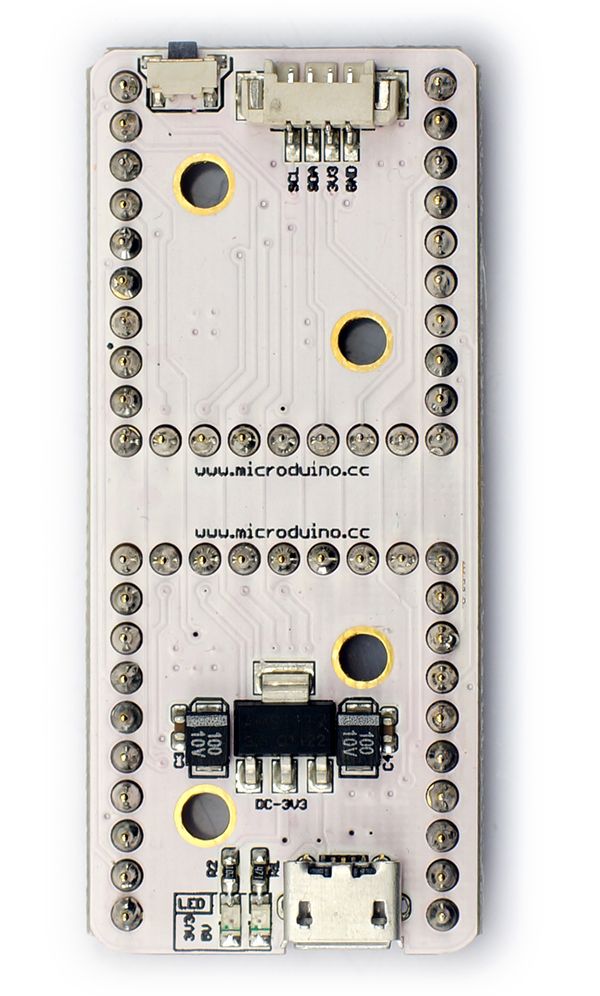Difference between revisions of "Microduino-Duo-v2"
From Microduino Wiki
(Created page with "{{Language|Microduino-Duo-v2}} {| style="width: 800px;" |- | 400px|thumb|right|Microduino-Duo-V Microduino-Duo-V 2 is a vertical extension board ...") |
|||
| Line 4: | Line 4: | ||
| | | | ||
[[file:Microduino-Duo-V.jpg|400px|thumb|right|Microduino-Duo-V]] | [[file:Microduino-Duo-V.jpg|400px|thumb|right|Microduino-Duo-V]] | ||
| − | Microduino-Duo- | + | Different from other Microduino modules, Microduino-Duo-V2 is a vertical extension board. |
|- | |- | ||
| | | | ||
==Features== | ==Features== | ||
| − | * | + | *Compatible with the pin of Arduino Uno; |
| − | * | + | *The 2.45-pitch female pin header offers the base for Microduino modules and pins with the same name are connected to the base, making it easy for debugging; |
| − | * | + | *Uniformed Microduino interface standard and rich peripheral modules, capable of having a fast and flexible connection and extension with other modules and sensors in accord with Microduino interface standard; |
| − | *Two | + | *Two bases are arranged longitudinally with the pins interconnected on the board, making it possible for reducing the stacking height; |
==Specifications== | ==Specifications== | ||
| − | * | + | *3V3 constant voltage; |
| − | *Onboard power | + | *Onboard power indicator (5V or 3.3V); |
| − | * | + | *Onboard reset key; |
*MicUSB power supply; | *MicUSB power supply; | ||
| − | *Two Microduino UPIN27 | + | *Two Microduino UPIN27 bases are interconnected and arranged longitudinally on the board. |
[[File:Duo-v-Pinout-1.jpg|800px|thumb|center|Microduino-Duo-v-Pinout]] | [[File:Duo-v-Pinout-1.jpg|800px|thumb|center|Microduino-Duo-v-Pinout]] | ||
| Line 26: | Line 26: | ||
==Development== | ==Development== | ||
| − | + | The module is capable of having a fast and flexible connection and extension with other modules and sensors conforming to Microduino interface standard. | |
==Application== | ==Application== | ||
| − | + | It can stack with any Microduino module, forming different systems and lowering the height. | |
==Pictures== | ==Pictures== | ||
Revision as of 07:57, 13 August 2014
| Language: | English • 中文 |
|---|
|
Different from other Microduino modules, Microduino-Duo-V2 is a vertical extension board. |
Features
Specifications
DocumentDevelopmentThe module is capable of having a fast and flexible connection and extension with other modules and sensors conforming to Microduino interface standard. ApplicationIt can stack with any Microduino module, forming different systems and lowering the height. Pictures |



